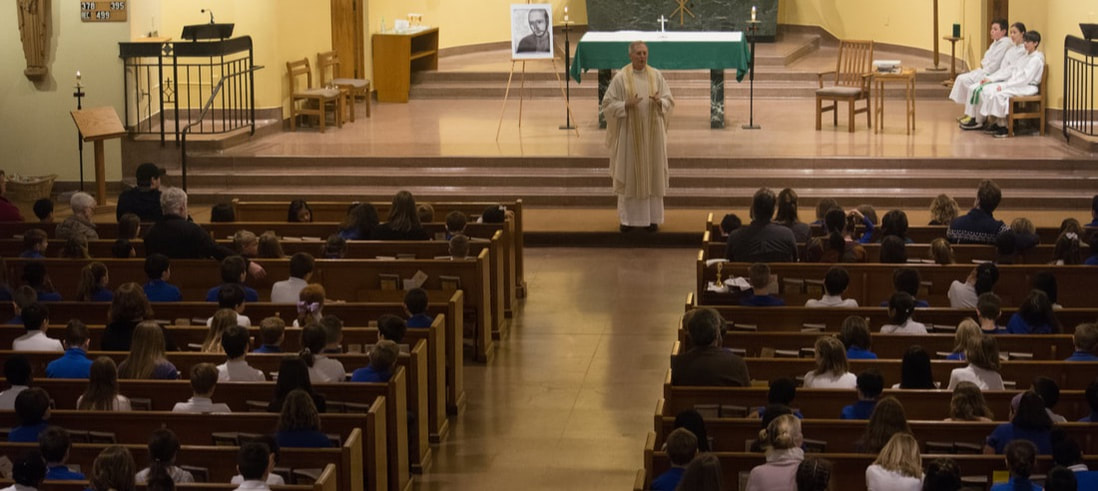OUR STORY
Since 1910 St. Ignatius School has been graduating students who receive an excellent spiritual, religions and academic education so that they go on to become better people, Catholics and citizens. In December of 1983 a visionary and anonymous donor dedicated to Catholic education made an extraordinary gift of $15,000 to a number of Portland area Catholic schools (including St. Ignatius) with a legal stipulation that the original gift never be spent. St. Ignatius parishioners quickly leapt at this opportunity, organized a board of directors, and incorporated the St. Ignatius School Foundation in 1984 using the gift as seed money. The dream of this original board (based the belief that a Catholic school education was invaluable to children, the community and to the future of the Church) had three main goals:
- to grow the fund so that it would someday cover most, if not all, of the budget of the school
- that families will pay little or no tuition
- make the tuition affordable so that every family that wanted to send their children to the school could do so
Our Operating Principles
The St. Ignatius School Foundation Endowment was created by a donor from a gift containing a legal stipulation that the original gift may never be expended. These gifts are held and invested in perpetuity by The St. Ignatius School Foundation for the purpose of generating a permanent expendable income stream from the return on the donations to the Foundation for the purpose of generating a yearly gift to the school.
Since the principal of an endowed gift may never be expended, then a very significant aspect of any institution’s endowment policy is the question of how much of the total return earned on those gifts may be expended annually.
Most institutions invest to maximize long-term total return of their endowment, but have very conservative spending policies. That is, in order to ensure the spending made available from the endowment is equal to, or better yet, outpaces the rate of inflation, most institutions set annual spending policies at rates less than their expected total rate of return. By retaining a portion of return in the principal, rather than spending it, the fund will grow. If this inherent conservatism were not in place, an endowed scholarship fund that provided a full scholarship from the spending the first year might only provide one-half a scholarship in its tenth year, due to the effects of inflation and the higher cost of education. Eventually, its value would erode to nothing.
There is a common misconception that endowments can be accessed like bank accounts, used for anything at any time as long as funds are available. In reality, The Foundations flexibility in spending from the endowment is limited by the fact that it must be maintained in perpetuity and that it is largely restricted.
Endowment gifts are intended by their donors to benefit both current and future generations of students. As a result, The Foundation Board of Directors is obligated to preserve the purchasing power of these gifts by spending only a small fraction of their value each year. Spending significantly more than that over time, for whatever reason, would privilege the present over the future in a manner inconsistent with an endowment’s fundamental purpose of maintaining intergenerational equity.
In addition, many donors also designate a specific purpose for which their fund can be spent. For us the Family funds are subject to these restrictions.
Since the principal of an endowed gift may never be expended, then a very significant aspect of any institution’s endowment policy is the question of how much of the total return earned on those gifts may be expended annually.
Most institutions invest to maximize long-term total return of their endowment, but have very conservative spending policies. That is, in order to ensure the spending made available from the endowment is equal to, or better yet, outpaces the rate of inflation, most institutions set annual spending policies at rates less than their expected total rate of return. By retaining a portion of return in the principal, rather than spending it, the fund will grow. If this inherent conservatism were not in place, an endowed scholarship fund that provided a full scholarship from the spending the first year might only provide one-half a scholarship in its tenth year, due to the effects of inflation and the higher cost of education. Eventually, its value would erode to nothing.
There is a common misconception that endowments can be accessed like bank accounts, used for anything at any time as long as funds are available. In reality, The Foundations flexibility in spending from the endowment is limited by the fact that it must be maintained in perpetuity and that it is largely restricted.
Endowment gifts are intended by their donors to benefit both current and future generations of students. As a result, The Foundation Board of Directors is obligated to preserve the purchasing power of these gifts by spending only a small fraction of their value each year. Spending significantly more than that over time, for whatever reason, would privilege the present over the future in a manner inconsistent with an endowment’s fundamental purpose of maintaining intergenerational equity.
In addition, many donors also designate a specific purpose for which their fund can be spent. For us the Family funds are subject to these restrictions.
